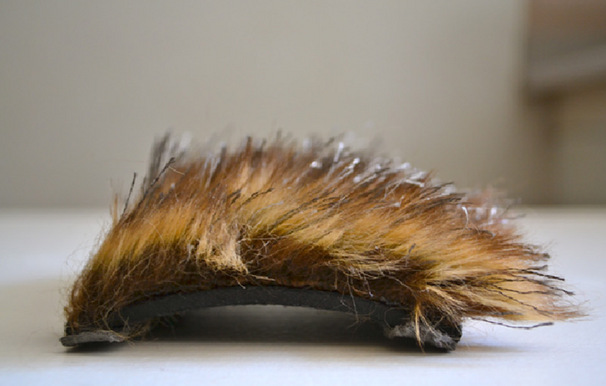
As Furs Fade in the West, Popularity Grows in the East (Op-Ed)

Wayne Pacelle is the president and chief executive officer of The Humane Society of the United States (HSUS). This Op-Ed first appeared on the blog A Humane Nation, where it ran before appearing in LiveScience's Expert Voices: Op-Ed & Insights.
Earlier this week, the Federal Trade Commission handed down a final decisionon a false advertising and labeling petition filed by The HSUS: for the next 20 years, Neiman Marcus and two smaller retailers (DrJays.com and RevolveClothing.com) will be on a short leash when it comes to advertising and labeling animal fur garments sold in the United States. These companies were selling animal products as "faux" even though the products contained real animal fur. Thanks to The HSUS, the companies were caught red-handed.
Through the years, our investigationshave exposed other fraudulent sales of animal fur — sometimes fur from domestic dogs or raccoon dogs — mislabeled or advertised as faux fur. Those investigations led to the passage of the federal Truth in Fur Labeling Act and enforcement actions against major retailers. The HSUS has worked with major department storesand designers — including JCPenney, Calvin Klein, Tommy Hilfiger, Kenneth Cole and Overstock.com — to go fur-free. This has helped to drive down the sales of animal fur in the United States, and imports, by more than one-third in the last decade.
The latest FTC action is an occasion to take stock of where the anti-fur movement stands.
The anti-fur movement surged in the 1980s, a decade before the advent of the Internet and streaming video allowed everyone to immediately access footage of routine and inhumane practices conducted by the fur industry.
At that time, there was a vibrant anti-fur movement on the streets — with the biggest crowds gathering in front of retail fur-sellers the day after Thanksgiving ("Fur-Free Friday"), with banners, posters and leaflets depicting the cruelty of steel-jawed leg hold traps and the privation of animals on fur factory-farms, along with ready alternatives for consumers who want stylish, warm outerwear garments.
There was some thought that the entire fur industry might tank, with global sales cut in half by the combination of animal advocacy, the stock market crash of 1987 and fashion trends in society. But, the industry weathered the crisis. In fact, the fur trade, working with top-end designers who show-off fur in their collections, claimed something of a renaissance in the 1990s and ultimately declared fur had regained its prior market share.
But with an animal protection movement that has gained far greater power in the last decade, and with the public not tolerating such frivolous uses of animals, the industry has been reeling in the United States — even as animal protection groups focused most of their firepower on other targets. Between 2002 and 2012, sales levels dropped by more than a third. The combination of steady anti-fur education, a series of warmer winters and a move toward casual dress by Americans have taken a toll on the sale of full-length mink coats — still the garment responsible for the majority of animals killed for the fur trade worldwide.
The problem is globalization. If demand has declined in the United States and the European Union, it has surged in China and Russia, where the animal protection movement has been weak. For years, China was the top manufacturer of fur garments, but now it's the top consumer, as well. All reports indicate that sales of animal-fur products in China are staggeringly high as new consumers invest in luxury products.
It's yet another reminder that the animal protection movement must be a global enterprise. While it's vital that Americans press the anti-fur case in the United States, advocates also have to nourish the movements in China and Russia to help all animals , including those killed just for their pelts.
Pacelle's most recent Op-Ed was No Matter the Spin, Whales in Captivity Deserve Better. This article was adapted from Fur Better, Fur Worse, which first appeared as on the HSUS blog A Humane Nation. The views expressed are those of the author and do not necessarily reflect the views of the publisher. This article was originally published on LiveScience.com.
Sign up for the Live Science daily newsletter now
Get the world’s most fascinating discoveries delivered straight to your inbox.
Why is yawning contagious?
Scientific consensus shows race is a human invention, not biological reality










